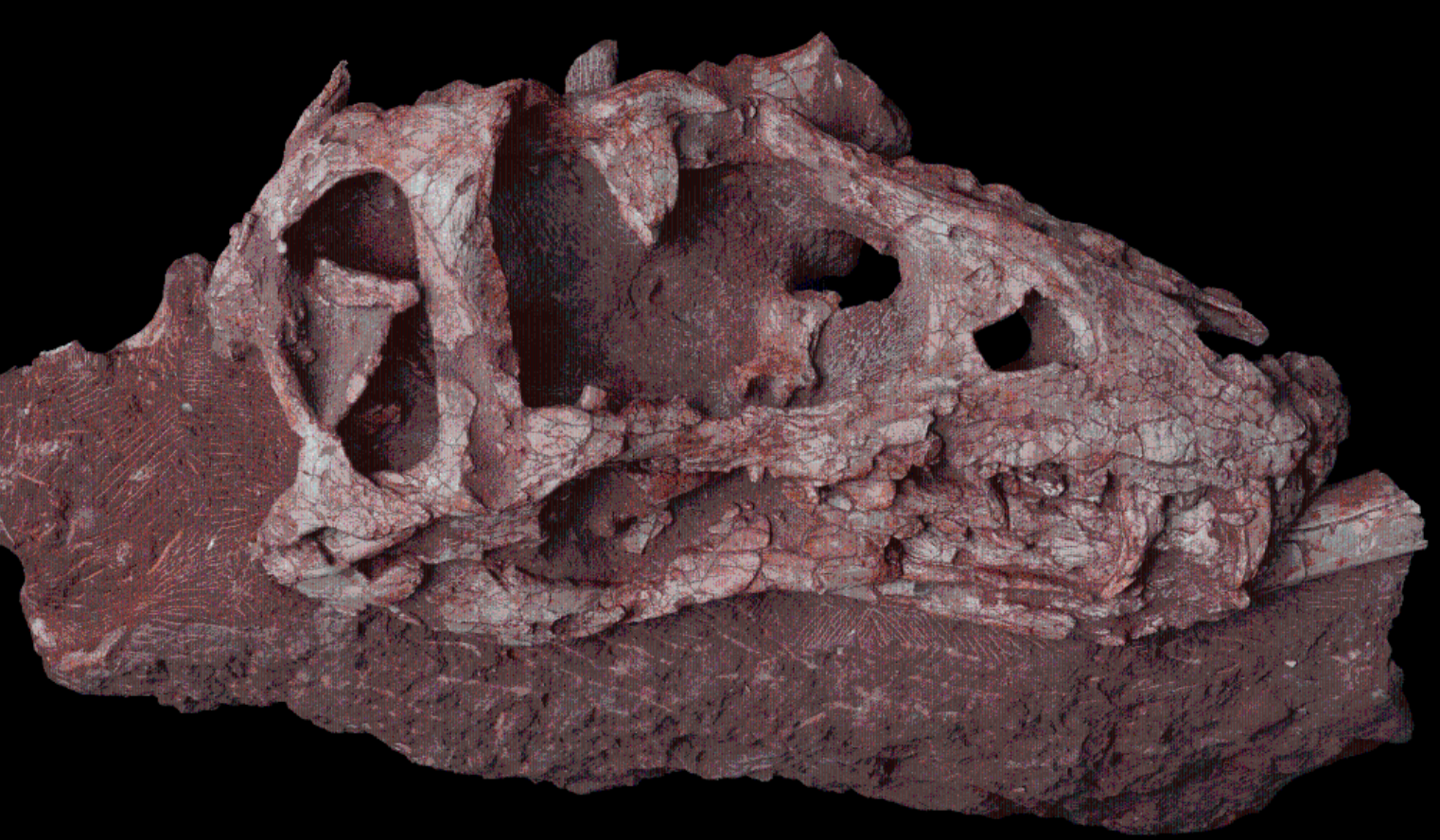
Fossil of Asiatyrannus xui Photo: Screenshot from Xinhua News Agency
China's paleontology research team has recently identified a new genus and species of tyrannosaur that marks the first deep-snouted tyrannosaur discovered in southeastern China, according to Xinhua News Agency.
The research was conducted by four paleontologists from the Zhejiang Museum of Natural History, and they named the new species "Asiatyrannus xui" in honor of Xu Xing, an academician of the Chinese Academy of Sciences, who has been dedicated to dinosaur research and has long supported the academic and popular science work of the museum.
Zheng Wenjie, deputy director of the Earth Sciences Department and a researcher at the museum, explained that the dinosaur, given the name "Asiatyrannus xui", lived during the Late Cretaceous period, which dates back 66 to 72 million years ago, according to Xinhua.
The fossil specimen includes an almost complete skull as well as tail vertebrae and hind limb bones. This dinosaur belongs to the more advanced Tyrannosaurinae subfamily within the Tyrannosauridae family. The related academic paper was published in Scientific Reports on Thursday.
Zheng noted that tyrannosaurs are a large family classified under the superfamily Tyrannosauroidea. They first appeared around 165 million years ago in the Middle Jurassic and went extinct at the end of the Cretaceous period, which is about 66 million years ago. Within the superfamily, the Tyrannosauridae family members were the top predators in Asia and North America during the last 20 million years of the dinosaur era.
Many people think tyrannosaurs have large heads. Zheng explained that based on snout characteristics, tyrannosaur heads can be divided into two types.
Most Tyrannosauridae dinosaurs have deep-snouted heads, with relatively short skulls front to back and higher vertical distances between the upper and lower jaws, making them appear somewhat "square." The skulls of Tyrannosaurus and Tarbosaurus are examples of this type. Asiatyrannus xui measures 47.5 centimeters in length and also belongs to the deep-snouted type.
Another group of Tyrannosauridae dinosaurs has long-snouted heads, with narrow snouts, and these dinosaurs are classified under the branch called Alioramini.
In the central Asian Gobi region, scientists have discovered deep-snouted tyrannosaurs and long-snouted Alioramini living at the same time. The former are larger, possibly occupying different ecological niches. In southeastern China, however, the body size comparison is reversed.
Asiatyrannus xui, which lived at the same time as the long-snouted Qianzhousaurus, was relatively small, while The Qianzhousaurus, estimated to reach a length of about 9 meters, was much larger.
The newly discovered Asiatyrannus xui, although an immature dinosaur, had passed its fastest growth stage with a body length of only about half that of Qianzhousaurus. They likely occupied different ecological niches and employed different hunting strategies to avoid direct competition.
Global Times




















